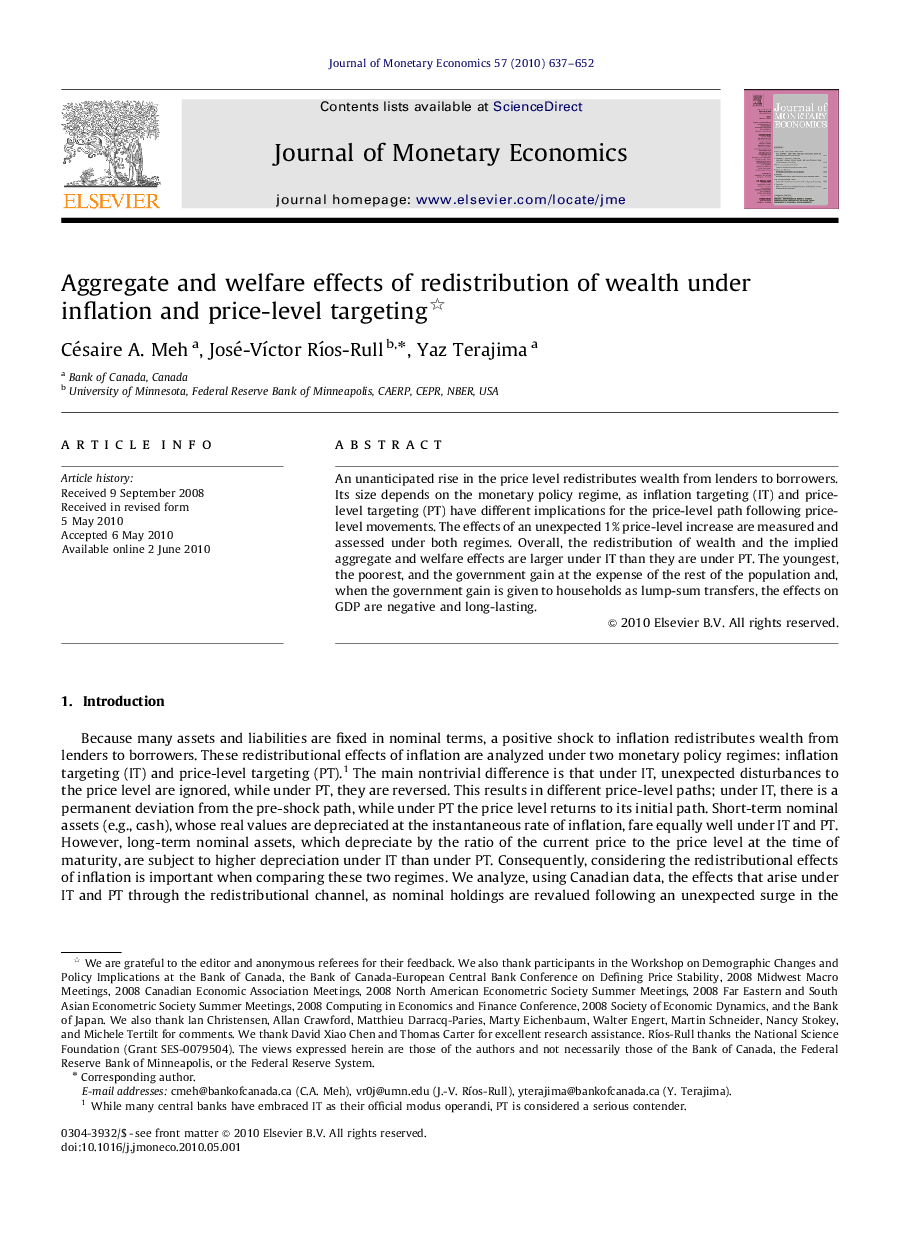| Article ID | Journal | Published Year | Pages | File Type |
|---|---|---|---|---|
| 967502 | Journal of Monetary Economics | 2010 | 16 Pages |
Abstract
An unanticipated rise in the price level redistributes wealth from lenders to borrowers. Its size depends on the monetary policy regime, as inflation targeting (IT) and price-level targeting (PT) have different implications for the price-level path following price-level movements. The effects of an unexpected 1% price-level increase are measured and assessed under both regimes. Overall, the redistribution of wealth and the implied aggregate and welfare effects are larger under IT than they are under PT. The youngest, the poorest, and the government gain at the expense of the rest of the population and, when the government gain is given to households as lump-sum transfers, the effects on GDP are negative and long-lasting.
Related Topics
Social Sciences and Humanities
Economics, Econometrics and Finance
Economics and Econometrics
Authors
Césaire A. Meh, José-VÃctor RÃos-Rull, Yaz Terajima,
